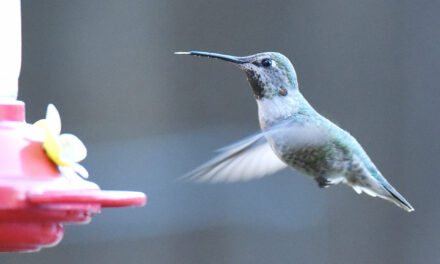Is Groundhog Day still something to celebrate? In California it is especially difficult to find a purpose for the groundhog celebration on Feb. 2.
Californians, unlike folks in the north and Midwest, are not looking for a respite from unbearable freezing winters. In fact, in California we welcome more weeks of rain as we seek to replenish aquifers. Furthermore, we do not even have groundhogs.
This seemingly wacky midwinter holiday in truth dates back hundreds of years. Northern European ancestors, bundled in furs and shivering by fires with fuel supplies running low, took midwinter very seriously. They ventured out in the snow to assess the situation.
Folks hoped for a glimpse of some hibernating animal such as a bear, hedgehog, or badger. An appearance was considered a sign that the animals’ instincts aroused them from hibernation. Their presence, even though they be bad, indicated spring was near.
As Europeans migrated to the Eastern United States, they kept the tradition of observing the end of hibernation as a sign of upcoming spring. Groundhogs were common hibernating animals, so folks looked for their appearance.
Groundhogs are large rodents in the marmot family. They live in the Eastern United States and Canada in open fields. They weigh up to 15 pounds and are about two feet long. They eat leaves, grasshoppers, snails and farmers’ plants.
Groundhogs burrow on a grand scale which many Eastern farmers consider destructive behavior. During winter groundhogs live underground in these extensive burrows. Normally, they build three rooms with a tunnel about 30 feet long and six inches wide.
In our modern time, in our temperate place, midwinter will come and go unnoticed. Maybe a few curious children will ask questions about pictures of old men in top hats dangling an unusual furry animal.
Feb 2 as mid-winter, though, is historically significant. Celebrations have roots in a faith tradition known as Candlemas. On this day, Christians took candles to church to be blessed. They prayed they had made enough to get them through to spring.
Visiting at gatherings, folks tried to predict how many candles were needed before winter would finally end. Guessing games and other fun activities developed.
One saying went, “If Candlemas be bright, winter has another flight. If Candlemas be clouds and rain, winter will not come again.” In other words, rain on Feb 2 would be the last round of winter. The use of animals as seasonal predictors developed from this tradition.
Locally, we can enjoy Feb 2 in a special way of our own choosing. Many national recognitions have been assigned to the date.
During the early twentieth century, Heavenly Hash Day was promoted. This sought to put some kind of religious significance back into celebrations on Feb 2. Marshmallows and almonds were baked in a crust and then dipped in chocolate. The hallow surprise inside encouraged children to look forward to the empty tomb celebrated at Easter.
Over time, many heavenly hash alterations developed. Cooks of all sorts made up their own versions of the treat with marshmallow being the only necessary ingredient. Look up recipes on the internet. Choose a tasty marshmallow delight to celebrate the day and shop locally for the ingredients.
As a take-off from Heavenly Hash Day, Tater Tot Day is also promoted on Feb 2. It may be a stretch, but an anonymous person noted that Tater Tots are heavenly and similar to potato hash. Evidently, that is enough to get a special day recognized on social media.
For whatever reason you choose to celebrate Feb 2, have fun. As always, shop locally for food items or candles to make the day special.

